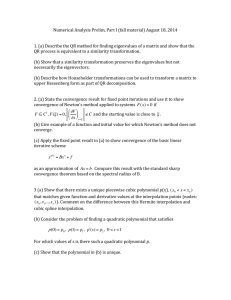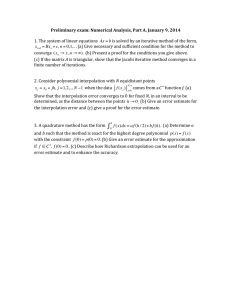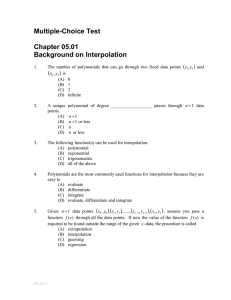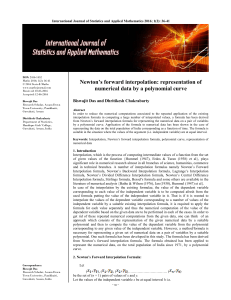Lecture 26 Newton`s Polynomial Interpolation
advertisement
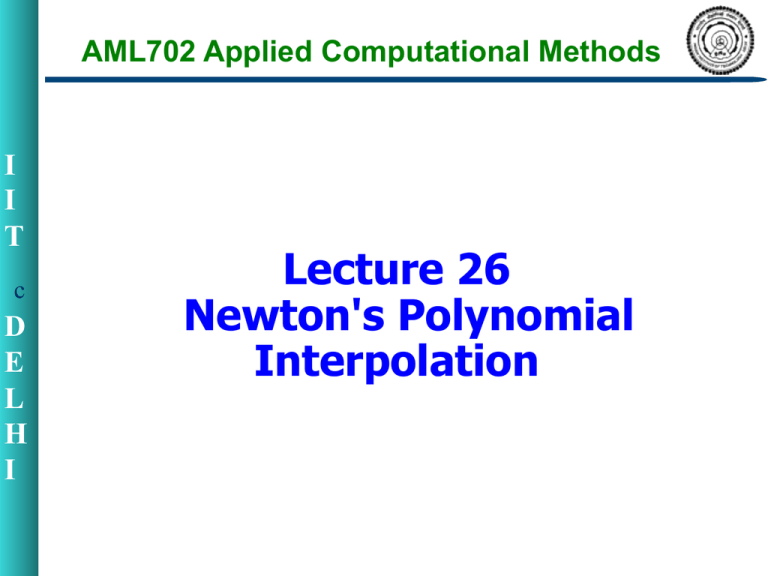
AML702 Applied Computational Methods I I T c D E L H I Lecture 26 Newton's Polynomial Interpolation Quadratic Interpolation • I I T D E L H I 2 • • • When we approximate a curve using a straight line it leads to large errors Therefore one of the possible ways to improve this is to introduce second order polynomial to approximate the curve. A convenient form to do this is given below To determine the coefficients bi, we start substituting x=x1, we get b1=f(x1). Evaluating this at x=x2, we obtain This is now evaluated at x=x3 to obtain Quadratic Interpolation I I T D E L H I 3 • • We can make these observations: b2 is actually representing the slope between x1 and x2 • Thus the first 2 terms correspond to linear interpolation between x1 and x2 in the quadratic interpolation eqn. The last term i.e., introduces second order curvature into the formula. The expression for b3 is similar to the finite difference approximation for the second derivative • • General form of Newton’s Interpolating Polynomial I I T D E L H I 4 • Now we can generalize to fit an (n-1)th order polynomial to n data points as follows: • To evaluate coefficients of (n-1)th order polynomial we need n data points Quadratic Newton Interpolation Polynomial • I I T D E L H I 5 The final form of higher order interpolation polynomial is as follows Where [ ] bracketed function evaluation are the divided differences, like
